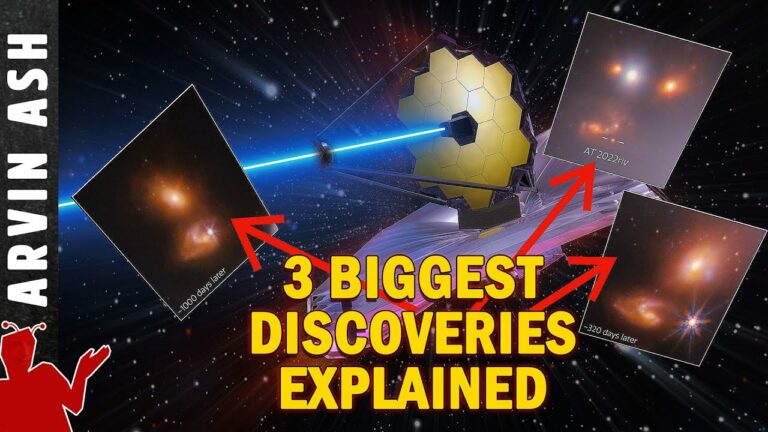NO HYPE Explanation of the 3 Biggest JWST Discoveries | Far Too Much BS About Webb Telescope on YT
James Webb captures infrared light, which allows us to see billions of light years away. Some galaxies would not be visible otherwise, because their light has redshifted beyond visible light spectrum due to the universe’s expansion.
As spacetime stretches, it makes the wavelength of light longer and longer. And for light from very distant galaxies, this redshift results in us receiving the light below the infrared range. And this is one of the reasons why the James Webb telescope is better for viewing the most distant objects. This is also why, in many of its pictures, colors are artificially added in post-production so that we can see it. The orginal photo, if shown, would not be visible to us.
The JWST seems to have found something that does not fit with our understanding of the universe based on the Lambda CDM model (Big Bang model).
The problem is that, according to our model, it would take a certain minimum amount of time for big and bright galaxies to form because it involves a hierarchical process of small clouds of gas that condense over time, then stars coming together to form nascent galaxies.
What the James Webb telescope discovered is that some galaxies like the JADES-GS-z14-0, existed less than 300 million years after the big bang. Is the Big Bang model broken? The answer is likely not so dramatic. The big discovery is simply that early galaxies seem a little more evolved than expected.
But there are a few potential explanations for this. 1) We simply might not understand dark matter correctly. If it has some unknown properties, then galaxies could form earlier than we think. 2) Early dark energy field in the early universe could have existed that would then have altered the mechanics of the early universe enough to explain the early galaxy formatio. 3) Population III stars, which are super massive stars virtually without any metal content, could have existed in the very early universe. They could burn quickly and form early black holes, speeding up the evolution of galaxies. There are other theories as well, but none of them are exactly physics-shattering, just minor adjustments to the Lambda CDM model.
The Webb telescope can also help us understand the evolution of a supernova in a very unique way. It has managed to take a picture where the same supernova can be seen at three different points in time. This is done using a concept Einstein himself predicted – gravitational lensing.
Gravitational lensing occurs when a massive celestial body causes a sufficient curvature of spacetime to bend the path of light travelling past or through it. This bending of light acts like a vast lens. An example of how this works is the supernova AT 2022riv, located about 9 billion light years away. Its light waves would just keep going straight if the universe were empty, but because of a massive galaxy in front of it, light bends in 3 different curves. So we see it in 3 different points in time.
The JWST is also really good at analyzing exo-planets including their chemical composition. It’s so powerful that it has also managed to take direct pictures of several exo-planets. What’s more, it can determine the chemical content of the exo-planet. It does this by analyzing the light of its star passing through the planet’s atmonsphere.
This analysis has already shown for example the abundance of methane and carbon dioxide on an exoplanet called K2-18B, located 120 light years away from us in the habitable zone of its star. This was the first time carbon-based molecules had been found in an exoplanet that is in the habitable zone of its star. Its composition supports the idea that there may be a water ocean underneath a hydrogen-rich atmosphere on it. Observations also detected a molecule called dimethyl sulfide (DMS). On Earth, this is only produced by life. The bulk of the DMS in Earth’s atmosphere is emitted from phytoplankton in marine environments.
Do not forget to share your opinion with us to provide you with the best posts !




0 Comments